MARKET OVERVIEW
The global high voltage cables market is that which, and its industry revolve around, production, distribution, and utilization of the cables produced with a view of carrying electrical energy over high voltage levels. Being able to be efficient in long distance transfer, such cables provide critical supply for most of the industries and projects related to infrastructures, and urban constructions, and serve a significant aspect in the supply chains of such global projects and their maintenance through a stable functioning capacity at those voltage levels.
High-voltage cables have specialized insulation and a strong construction. They are used in underground, overhead, and submarine power transmission systems. Such cables allow for the transfer of electricity from generation hubs to consumption centers through power plants, renewable energy farms, urban cities, and industrial estates. This means that energy will be transferred reliably and efficiently, regardless of where the consumption is being done. With the rise of global electrification initiatives, these cables are set to remain a backbone of energy infrastructure in years to come.
The global high voltage cables market is defined by its intricate design and engineering, which allow these cables to meet stringent technical standards and endure extreme environmental conditions. The industry encompasses various types of high voltage cables, including alternating current (AC) and direct current (DC) configurations, tailored to meet the demands of diverse projects. This sector is bolstered by innovations that enhance cable performance, minimize power losses, and extend their operational life. Manufacturers within the market continuously invest in cutting-edge technologies to address the dynamic requirements of the energy sector and support the growing transition to sustainable energy sources.
The scope of the global high voltage cables market extends beyond traditional energy applications. These cables are increasingly used in large-scale renewable energy projects, such as offshore wind farms and solar power plants, where reliable and high-capacity transmission networks are critical. Moreover, the market addresses the need for intercontinental power grids, connecting different regions to optimize energy distribution and reduce dependency on localized generation. Urbanization and industrialization trends also contribute to the rising demand for advanced high voltage transmission systems, positioning this market as a cornerstone of global energy strategies.
Looking ahead, the global high voltage cables market will expand in tandem with efforts to enhance energy efficiency and reduce environmental impact. Future developments will likely emphasize the integration of smart grid technologies, enabling real-time monitoring and control of power transmission systems. Additionally, advancements in materials science are anticipated to produce lighter, more durable, and environmentally friendly cable solutions. As nations worldwide continue to upgrade and modernize their energy infrastructure, the demand for high voltage cables will grow, solidifying the market's role in enabling a sustainable energy future.
The global high voltage cables market represents a vital segment of the energy industry, defined by its specialized solutions for high-capacity electricity transmission. The market’s evolution will align with technological advancements and the shifting priorities of global energy systems. Through ongoing innovation and strategic investments, the industry will maintain its central position in supporting economic development, urbanization, and the transition to cleaner energy sources.
Global high voltage cables market is estimated to reach $66,072.52 Million by 2032; growing at a CAGR of 5.9% from 2025 to 2032.

GROWTH FACTORS
The global high voltage cables market is expected to grow significantly due to technological advancements, the need for reliable power transmission, and increasing investments in renewable energy projects. High voltage cables play a critical role in transporting electricity over long distances with minimal energy loss, making them indispensable in the energy sector. The need for electricity is in a pressing rise all over the world, and therefore, the importance of these cables gains even more prominence. This growth occurs at a higher pace from rapid urbanization, industrialization, and the transition to a sustainable mode of energy.
In the future, the global high voltage cables market will look dynamic and innovative. Companies will focus on their offerings to be able to satisfy the different requirements of the power infrastructure. Companies are doing research and development to ensure efficient, durable, and eco-friendly cables. The product will be developed by integrating new materials and technologies in order to make it reliable and sustainable in the transmission of power.
Some of the largest players in this market are companies that are trying to better their positioning in the global high voltage cables market. The competitive landscape forces the major players to create high-tech solutions and try to solve global energy issues. Strategic collaborations, mergers, acquisitions, and entry into new markets by businesses help them expand their footprint. This highlights the collaboration aspect as a vital reason for innovation and solving the urgent needs of the energy sector.
The future of the global high voltage cables market will also see increased focus on renewable energy applications, as governments and corporations commit to reducing carbon emissions. High voltage cables will be pivotal in connecting offshore wind farms, solar power plants, and other renewable energy sources to power grids. This shift towards clean energy will create opportunities for companies to design and manufacture cables tailored for specific applications, ensuring efficiency and resilience in varying environments.
As technological advancements continue, the global high voltage cables market is expected to witness transformative changes. The emphasis on sustainability and the development of smart grids will further shape the industry's trajectory. Competitive players are likely to maintain their edge by innovating and adapting to emerging trends. In this rapidly growing market, their contributions will not only address energy demands but also support global efforts toward a cleaner and more connected future.
MARKET SEGMENTATION
By Installation
The global high voltage cables market will expand with significant growth due to rising energy demands and the need for power transmission. The role of high voltage cables in delivering electricity over long distances without wastage is significant, and this is why industries, cities, and infrastructure are being powered. Shifting winds and changing winds make the market change its ways to adapt to new technologies and methodologies to increase performance while minimizing damage to the environment. The high-capacity system aligns well with global efforts to boost energy efficiency to fulfill future power demands.
The global high voltage cables market, based on installation, can be divided into three segments: overhead, submarine, and underground. The segment of overhead installation holds the leading position in the market, accounting for $23,633.93 million. These are mainly used in open spaces, as they do not cost much and are easy to maintain, especially when laying underground cables is not possible due to vast spaces. However, exposure to environmental conditions like storms or extreme weather has made them prone to damage and hence innovative ways to increase their lifespan and productivity.
Another main business segment is in submarine cables, enabling ever more offshore wind energy and cross border power ties. Such installations provide the crossing of any water bodies with energy transfer, which is highly critical for large-scale renewable projects. And as offshore wind farms and underwater interconnectors continue to grow in numbers, so will be the demand for submarine cables. This technology can play a crucial role in making a country access many untapped sources of renewable energy while promoting international energy cooperation.
Underground cable systems are best suited for limited space with a zero visual impact in urban spaces. In populated areas, power delivery can be ensured safely without disfiguring the landscape. Better materials and easier installation methods now make underground more reliable and cost-effective, dispelling earlier concerns with respect to complicated maintenance and repairs.
Going forward, the global high voltage cables market will keep transforming in a manner to help answer the needs of energy transition. This will include growing investment in renewable energy projects and grid modernization. Innovative, efficient, high voltage cable solutions will then become essential to this movement and crucial to global cleaner energy goals, low transmission losses, and reliable power. The industry will go forward with the advancement of technology. The market is going to grow by adapting to changes in the dynamics of producing and distributing energy. It's forward-looking in terms of how high voltage cables can be a part of a sustainable and connected energy future.
By Voltage
The global high voltage cables market is poised for significant growth, driven by the increasing demand for reliable power transmission across vast distances. High voltage cables play a critical role in supporting the distribution of electricity from power generation facilities to end-users, ensuring efficient and uninterrupted supply. With the world rapidly shifting towards renewable energy sources and increasing urbanization, the growth of high voltage cables is also expected to stay strong in the upcoming years. This market can be broadly classified on the basis of voltage into three major categories- 100 kV to 250 kV, 251 kV to 400 kV, and above 400 kV-and each of the categories deals with specific transmission needs catering to diversified industries and regions.
The 100 kV to 250 kV segment has been significantly used for medium-length power transmission and distribution network. Recently, it became even more relevant with governmental and utility companies modernizing older grid infrastructure to supply more electricity. It has improved the tensile strength, level of durability, and efficiency of cables in this range, making it a reliable choice for urban and suburban alike settings.
The 251 kV to 400 kV segment addresses longer-distance transmission needs, often connecting major power generation hubs with densely populated regions. As the global focus shifts toward renewable energy, such as wind and solar, this category is expected to see considerable growth. High-capacity cables in this range are essential for transferring electricity from remote renewable energy installations to consumption areas. Furthermore, innovations in manufacturing and insulation materials have allowed these cables to handle larger loads while reducing energy loss, supporting a more sustainable and efficient energy ecosystem.
The above 400 kV segment represents the pinnacle of high voltage transmission capabilities, catering to extremely long-distance applications. These cables are typically employed in large-scale projects, such as cross-country and intercontinental power links, which are increasingly vital in today’s interconnected world. With countries investing heavily in their energy trade and transnational grid connectivity, demand for ultra-high voltage cables is anticipated to surge. This category is also critical in facilitating renewable energy integration, ensuring seamless power transmission over thousands of kilometers.
The global high voltage cables market is set to evolve further as energy needs rise and technology advances. By addressing distinct voltage requirements, this market ensures that electricity reaches consumers with improved efficiency and minimal loss, laying the groundwork for a sustainable future.
By Type
The global high voltage cables market helps cater to an increasing electricity demand within the world as technologies advance with new infrastructure installations, and its utilization for efficiently transmitting long distances becomes paramount. High-voltage cables link up the power-generating plants with the substations and distribution lines so that an assured supply can reach industries and commercial and industrial and even households. Their importance grows as nations prioritize renewable energy sources, modernize grids, and address the challenges of energy efficiency.
By type of transmission, the global high voltage cables market is divided into HVDC (High Voltage Direct Current) and HVAC (High Voltage Alternating Current) systems. Each serves specific purposes and contributes uniquely to the overall market. HVDC is more suitable for long-distance transmission with minimal loss, so it is highly suitable for the interconnection of renewable energy-based projects like an offshore wind farm with the mainland grids. HVAC, on the other hand, is still being used in most localized transmission and traditional energy networks because of the already existing infrastructure, significant investments, and compatibility with the existing grids.
The future of the global high voltage cables market is closely tied to global energy trends. Governments worldwide are heavily investing in renewable energy, driving the demand for advanced high voltage cables that can handle the complexities of connecting diverse energy sources to grids. Offshore wind farms, solar plants, and hydroelectric projects require efficient transmission solutions, which boost the demand for HVDC technology. Additionally, urbanization and the need for resilient power infrastructure are leading to modernization efforts, creating opportunities for HVAC systems to maintain their relevance.
Moreover, advancements in materials and design are expected to further enhance the performance and efficiency of high voltage cables. Innovations such as superconducting cables, which reduce energy losses significantly, could redefine the market. The integration of digital monitoring systems to ensure the reliability and safety of power transmission is another promising development.
As the global high voltage cables market evolves, its impact on sustainable energy and infrastructure will be profound. This strategic collaboration by the manufacturers, government, and energy providers will stimulate innovation in this market, opening it to newer scopes. Growing demand to minimize carbon footprint and fulfill the needs of energy would see an extensive growth of the market within the next years. These advancements will ensure a reliable and efficient energy supply for future generations, highlighting the indispensable role of high voltage cables in shaping a sustainable energy future.
By End-User
The global high voltage cables market is of significant importance in modern infrastructure development and energy distribution. High voltage cables are used to transmit electricity over long distances with minimal power loss, supporting the ever-growing demand for energy across the world. These cables are widely used to connect power generation facilities to substations and eventually to end users. With advancements in energy technologies and the push for using renewable energy sources, it is expected that demand for high voltage cables will significantly increase in the coming years.
The market is segmented by end-users into utility and industrial sectors. Utility applications form the largest share in the global high voltage cables market due to a high-scale application of electricity transmission and distribution networks. Of course, these networks are crucial in the powering of cities, towns, and rural areas with a consistent energy supply. The steadily increasing world population and rate of urbanization mean that a greater number of high-capacity transmission lines will be needed. Governments worldwide will also cause the further demand for high voltage cables by upgrading aging grid infrastructure. Another factor that will propel the use of such cables is the change towards renewable energy sources like wind and solar farms, as these sources of energy must be connected efficiently to the power grid, many times from far-flung places.
The global high voltage cables market is also a significant contributor. Manufacturing, mining, and the oil and gas industries all significantly rely on high voltage cables for their operations. The growing automation of industrial processes and the demand for reliable energy supplies in remote areas are some reasons behind the rising demand in this sector. Also, as industries pursue low-carbon footprints, many are investing in clean energy projects, and that will require high-voltage cable installations.
In the foreseeable future, technological advancements in material and insulation improvement along with designs are likely to revolutionize the high voltage cable market. At that point, more efficiency, durability, and cost-effectiveness can be achieved. Smart grid technologies and energy storage systems will also necessitate cables that meet the established need for advanced communication and power management.
Overall, the global high voltage cables market would tend to grow largely with the rapidly increasing demand in reliable energy distribution, the renewable energy projects scale up, and the modernisation of grid infrastructures. This will be primarily led by utilities and industrial end-users to help high voltage cables remain integral components to any future energy scenario.
|
Forecast Period |
2025-2032 |
|
Market Size in 2025 |
$44,324.46 million |
|
Market Size by 2032 |
$66,072.52 Million |
|
Growth Rate from 2024 to 2031 |
5.9% |
|
Base Year |
2024 |
|
Regions Covered |
North America, Europe, Asia-Pacific, South America, Middle East & Africa |
REGIONAL ANALYSIS
The global high voltage cables market is one of the vital elements in the infrastructure system. This provides for efficient and reliable electricity transmission over vast distances. Growth and dynamics differ by geography and vary based on regional economic development, adoption of technology, and government policies. The variation of the opportunities and challenges created shapes the future of this market in very fundamental ways.
In North America, high voltage cables' demand is based on the growing renewable energy projects and modernizing the aging electrical grids. In the United States, Canada, and Mexico, there are efforts to improve the energy transmission system to meet consumption needs while making it more environmentally friendly. For example, with increasing penetration of renewable energy sources like wind and solar power, the need for efficient long-distance transmission systems is expected to grow rapidly, fueling the demand for high voltage cables in this region.
Europe is the second largest global high voltage cables market for high voltage cables, with major participating countries like UK, Germany, France, and Italy investing heavily in clean energy initiatives. Governments are implementing green energy policies, which necessitate strong transmission infrastructure to link renewable energy sources with urban and industrial centers. Europe's interconnection of countries through advanced grid systems is accelerating the demand for high voltage cables by fostering cooperation across borders to ensure energy security and efficiency.
Asia-Pacific is expected to grow rapidly in the high voltage cables market due to fast-paced industrialization and urbanization. The demand for electricity in countries like China, India, Japan, and South Korea is increasing; these countries are, therefore investing a lot in energy infrastructure. The establishment of offshore wind farms and other renewable energy projects also signifies the need for advanced cable technologies in this region. Given the Asian-Pacific governments' interest in increasing access to energy and promoting sustainability, the Asian-Pacific region will most likely be one of the global market leaders for years to come.
There is hope for the future in South America, too, beginning with Brazil and Argentina, with their energy diversification and grid modernization programs. The increasing use of renewable energy sources in the region will bring about opportunities for high voltage cables to be deployed, especially for bridging remote areas that need better connectivity.
In contrast, new energy projects are being embraced in the Middle East & Africa to satisfy surging demand for electricity due to population growth and expansion of industries. The high voltage cables will be strategically invested in countries in the Gulf Cooperation Council (GCC), Egypt, and South Africa in line with ambitious infrastructure projects and enhancement of energy distribution networks.
Each region plays a unique role in shaping the trajectory of the global high voltage cables market, underscoring the importance of tailored strategies to address specific needs and opportunities.
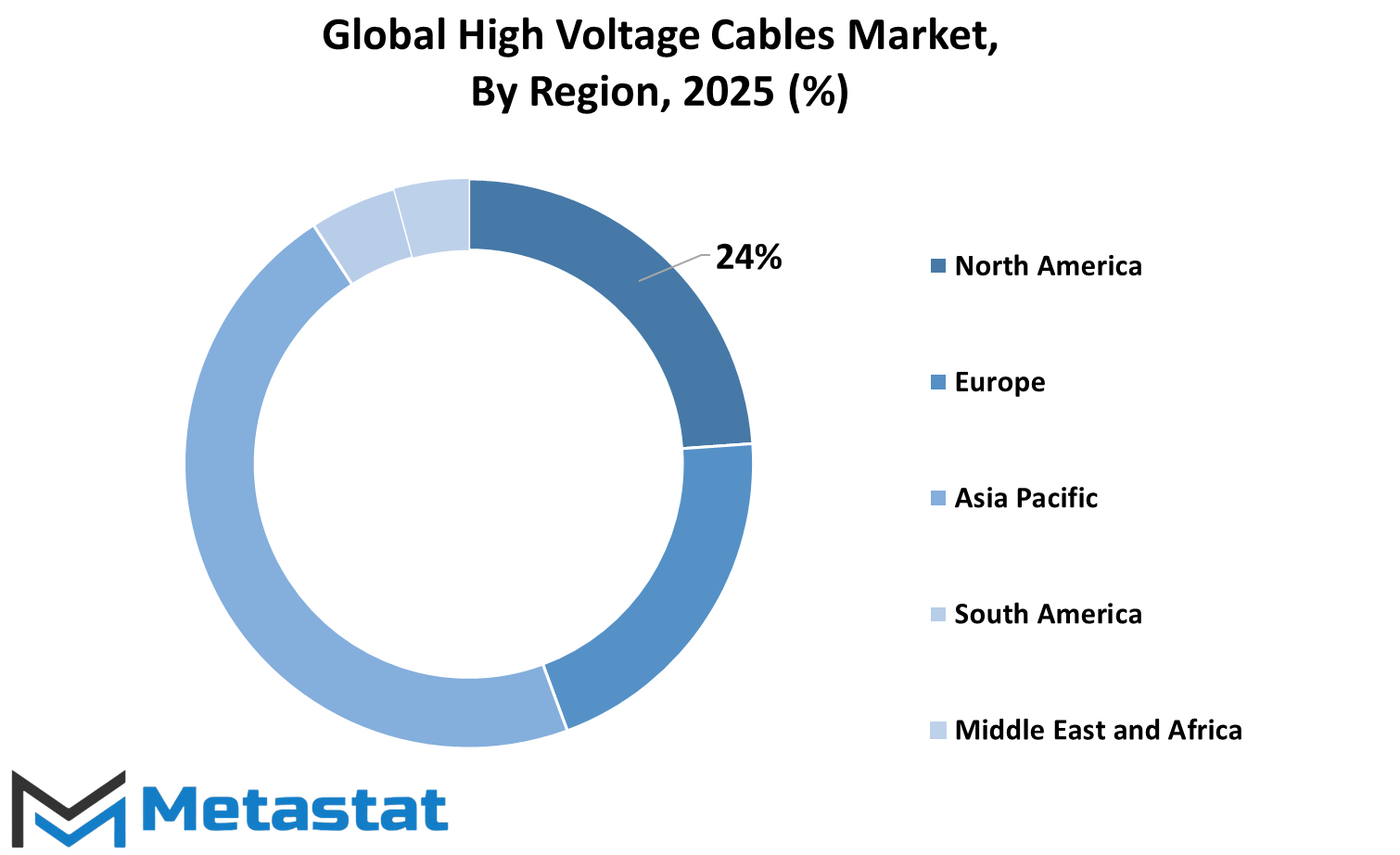
COMPETITIVE PLAYERS
The global high voltage cables market is expanding highly due to greater demand for secure and efficient answers in power transmissions. Increased demand for energy across the globe makes that its transfer long distances with an insignificant loss of power be integrated via high voltage cables. These cables are a key in the interconnection of renewable sources, like wind and solar farms, to power grids for a greener future in energy. It is an emerging industry with firms working towards innovative technologies that ensure increasing energy supply without compromising environmental factors.
Main market players involved are Sumitomo Electric Industries, Nexans, General High Voltage Ind. Ltd. and Prysmian SpA are among the companies that have taken the lead in innovation and expansion. Other contenders include Furukawa Electric, LS Cable & System, and KEI Industries Limited, which are shifting to manufacture cables with better properties for high-voltage resistance, durability, and good performance under critical conditions. Emphasis for research and development is also supported by the increasing need to modernize aging infrastructure in more developed power regions. The global high voltage cables market also clearly expresses a need to fulfill specific needs of various regions. For instance, companies like Dubai Cable Company (Ducab), Cable Corporation of India Limited, and Riyadh Cables Group Company manufacture their products according to specific climatic and operational requirements. Investment in smart cable technologies by world leaders like ABB, Hitachi Metals, and General Electric Company, focusing on grid reliability and support to shift towards cleaner energy sources, would highly influence the future of the global high voltage cables market.
Urbanization and industrialization increase the demand for reliable networks for energy distribution. More countries will aim to reduce carbon footprint, thereby improving the inclusion of renewable energy into power grids. This, in turn, will boost demand for novel cable solutions. Taihan Electric Wire Co., Ltd., Marmon, and Hengtong Group are already leading efforts to produce next-generation products that can cope with these evolving challenges. As competitive players like Leoni AG, PHELPS DODGE PHILIPPINES, and Bahra Advanced Cable Manufacture Co. As Ltd. continues to explore emerging opportunities, the global high voltage cables market will remain an important sector in ensuring the seamless flow of energy needed to power the future.
High Voltage Cables Market Key Segments:
By Installation
- Overhead
- Submarine
- Underground
By Voltage
- 100 kV – 250 kV
- 251 kV – 400 kV
- Above 400 kV
By Type of Transmission
- HVDC
- HVAC
By End-User
- Utility
- Industrial
Key Global High Voltage Cables Industry Players
- Sumitomo Electric Industries
- Nexans
- General High Voltage Ind. Ltd.
- Southwire Company
- Prysmian SpA
- Furukawa Electric
- LS Cable & System
- KEI Industries Limited
- Dubai Cable Company (Ducab)
- Cable Corporation of India Limited
- NKT A/S
- Taihan Electric Wire Co., Ltd.
- Riyadh Cables Group Company
- ABB
- PHELPS DODGE PHILIPPINES
- Hitachi Metals
- General Electric Company
- Bahra Advanced Cable Manufacture Co. Ltd.
- Marmon
- Hengtong Group
- Leoni AG
WHAT REPORT PROVIDES
- Full in-depth analysis of the parent Industry
- Important changes in market and its dynamics
- Segmentation details of the market
- Former, on-going, and projected market analysis in terms of volume and value
- Assessment of niche industry developments
- Market share analysis
- Key strategies of major players
- Emerging segments and regional growth potential



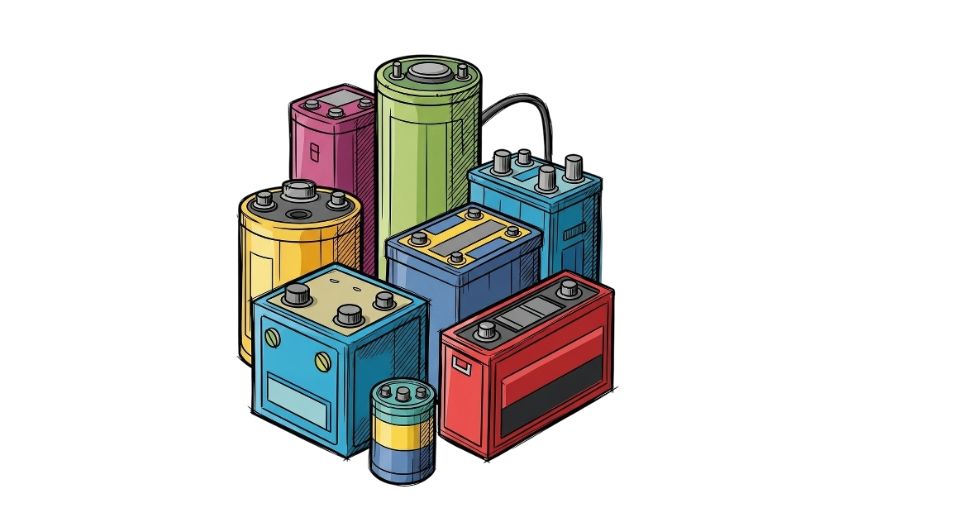
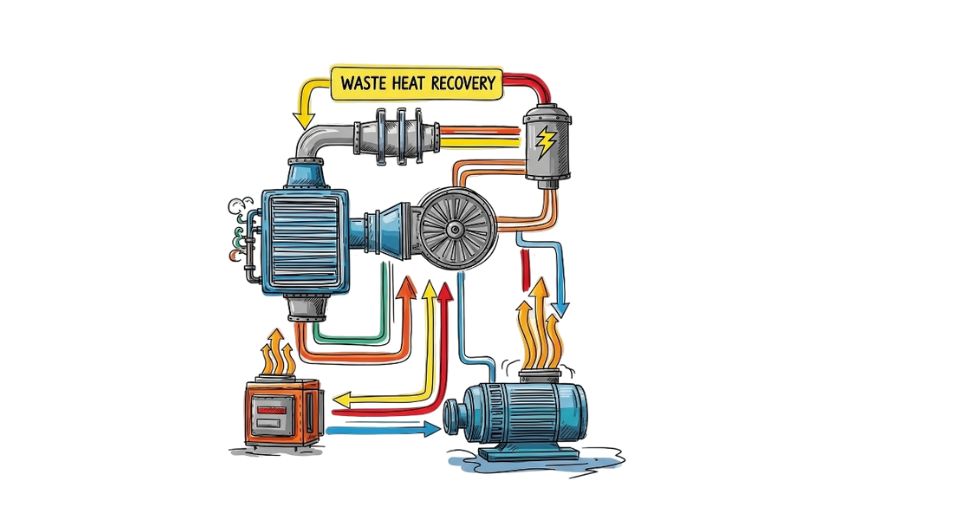
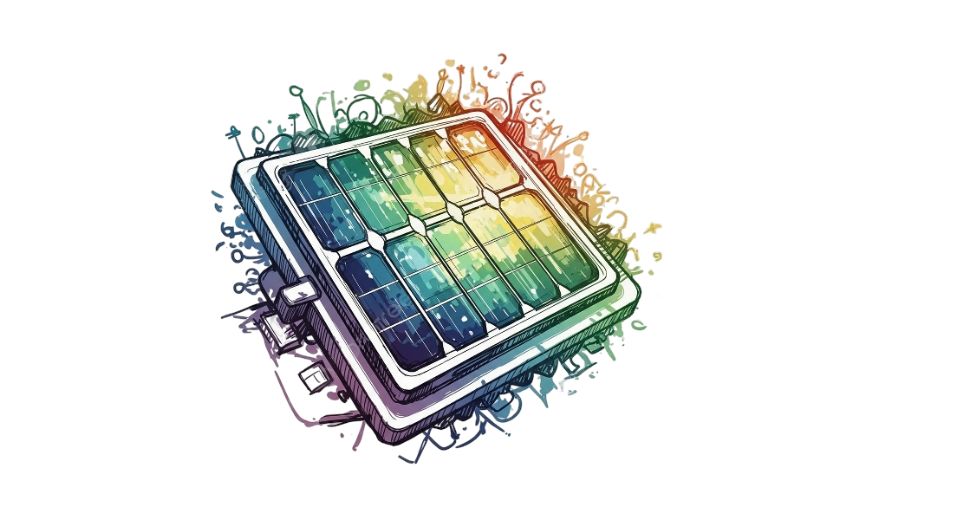
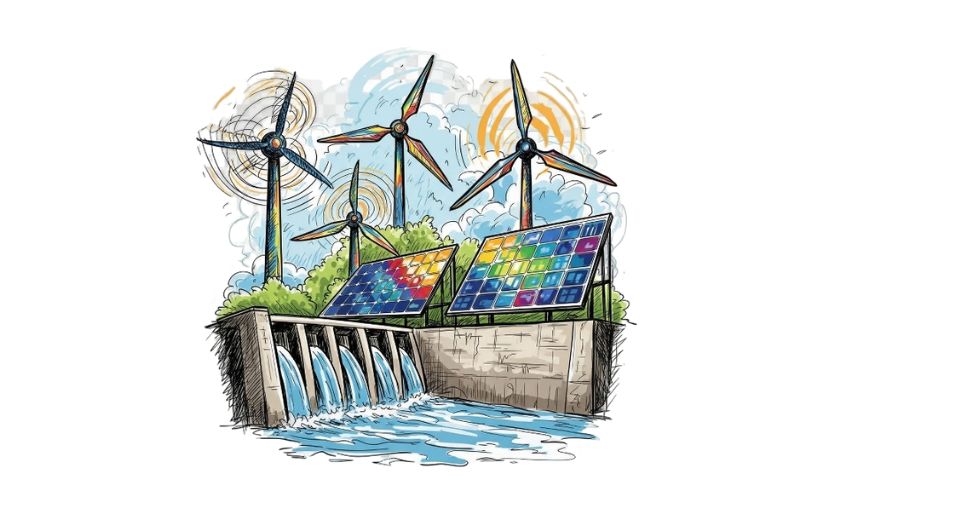

 US: +1 3023308252
US: +1 3023308252






